The Mandarin Duck is a local rarity and a bird I had never seen before in the wild so when a single drake showed up in Whitby it created quite a flurry of interest.
The Mandarin Duck is an East Asian perching duck found primarily in Russia, China and Japan. It is a medium sized duck and is closely related to the North American Wood Duck and is similar in that they both nest in empty tree cavities, sometimes as high as thirty feet above the ground. After the chicks are born the mother pushes them out of the tree and then leads them off to the nearest body of water. Mandarin Ducks are among the most beautiful and colourful ducks as the following pictures shows.
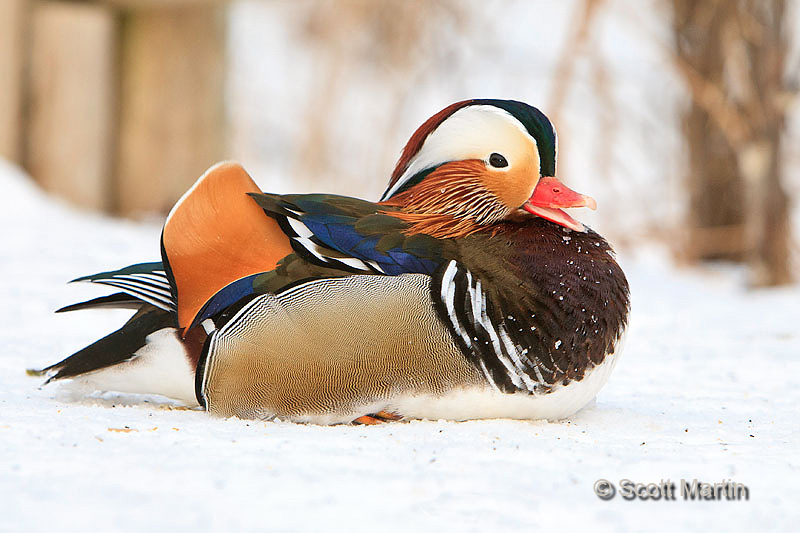
When shooting birds on the ground it is important to get the camera at their level in order to achieve the best results. The above shot was taken while lying down on the ground resting the 70-200mm lens on the palm of my hand. The next image was taken from a sitting/kneeling position to show the colour ranges and feathers detail on the dorsal aspect of the bird. Although the shot accomplishes the purpose you can clearly see the better perspective of the first image. So next time you are photographing anything on the ground, don’t forget to lie down and get the job done right!
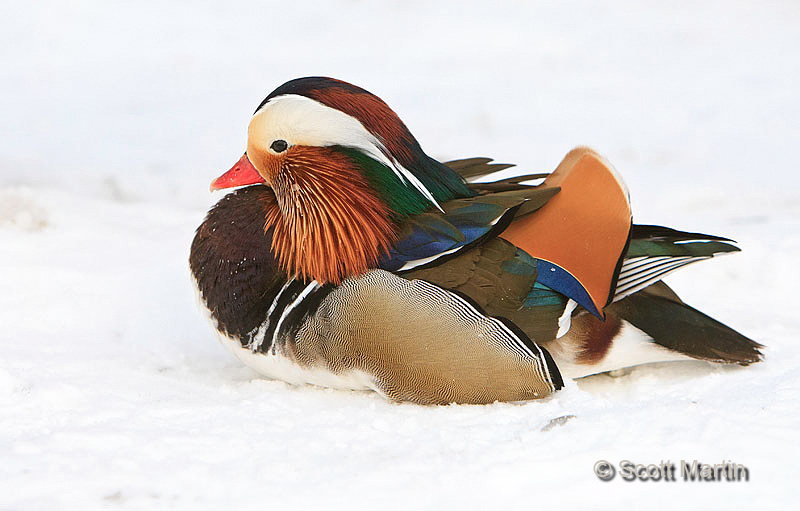
Although there are a few feral colonies of Mandarin Ducks in North America, they were probably created by the escape of bids from captive collections (i.e., zoos). It is unlikely they are a result of misplaced migration from East Asia. In all probability the Mandarin drake that arrived in Whitby is an escaped captive bird.
The only open water for this duck is a pool created by the fast flowing water from a couple of late drainage pipes that is only about thirty feet in diameter. This little Mandarin Duck shares the small pool with about a hundred Mallard ducks and a few Canada Geese so it was very difficult to get any images of the Mandarin alone in the water. The following three are the best I could do.
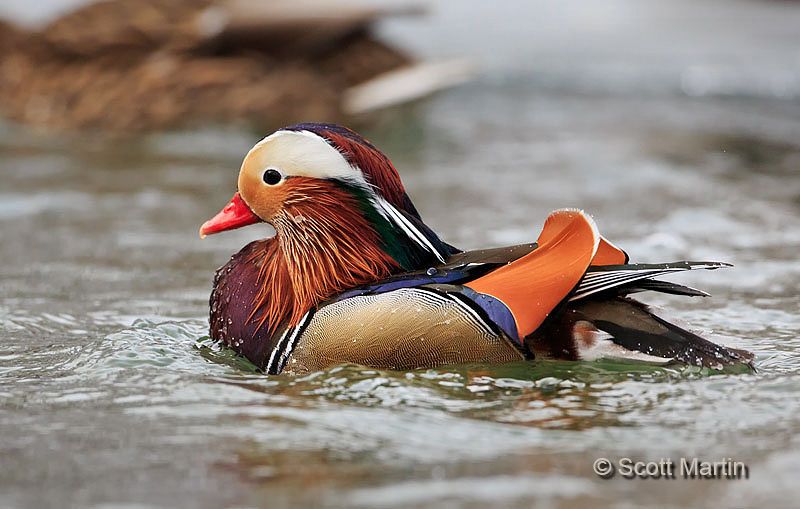
Frolicking
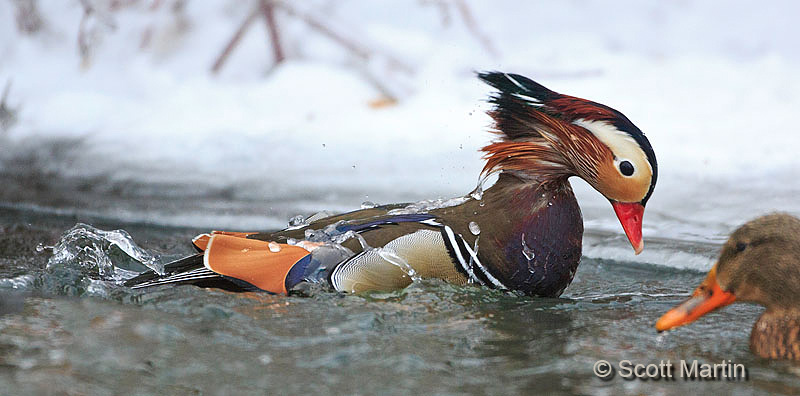
Water off a duck’s back!
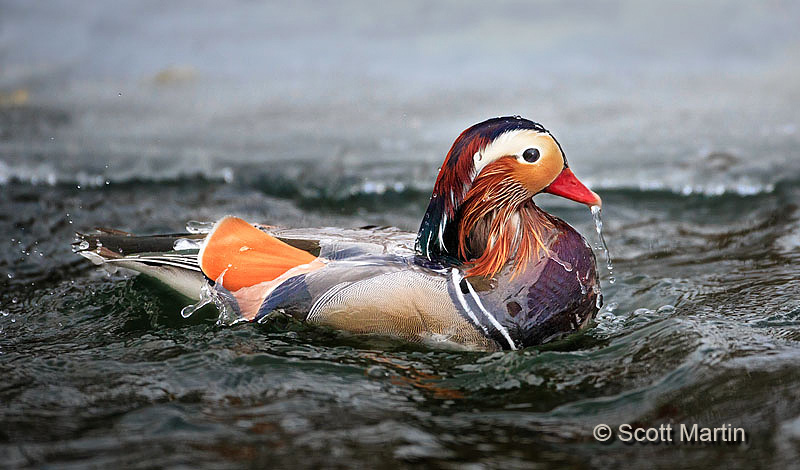
When photographing wildlife it is always best to take lots of exposures when the target is in your viewfinder as the spontaneous nature of wild animals often presents some interesting even humorous actions. This is completely different from landscape photography where the subject doesn’t move and you can invest as much time as necessary to plan, compose and execute the ‘perfect’ single image and then move on to the next shot.
Spontaneous ‘snapshots’ don’t have to be perfectly composed with tack sharp focus (although it helps) as long as the story the image tells or the smile that it creates is the overarching result of the photograph. Here are a couple of such snapshots obtained while photographing the Mandarin Duck this week. Although not typical images for posting on photography blog designed to showcase great photography, I do trust you enjoy them and they give you a smile.
Stepping out with the big boys! (this does provide a good perspective for appreciating the size of the Mandarin Duck).
Where angels fear to tread.
The first two images in this post were taken handheld with the 1D Mk III and 70-200mm/2.8, while the three shots of the duck on the water were using the 5D Mk III and 500mm/4, again handheld. Although these body/lens combinations may seem odd, some thought went into them. The 1D body has a crop factor of 1.3 meaning that a 100mm lens functions like a 100 x 1.3 = 130mm lens when attached to the crop body. So a crop body lengthens the effective reach of the lens compared to the same lens placed on a full frame camera like the 5D. Knowing that it was possible to get relatively close to the ducks, putting the crop body on the smaller lens and the full frame body on the longer lens created the optimal effective focal ranges for getting the best pics of the Mandarin Duck.


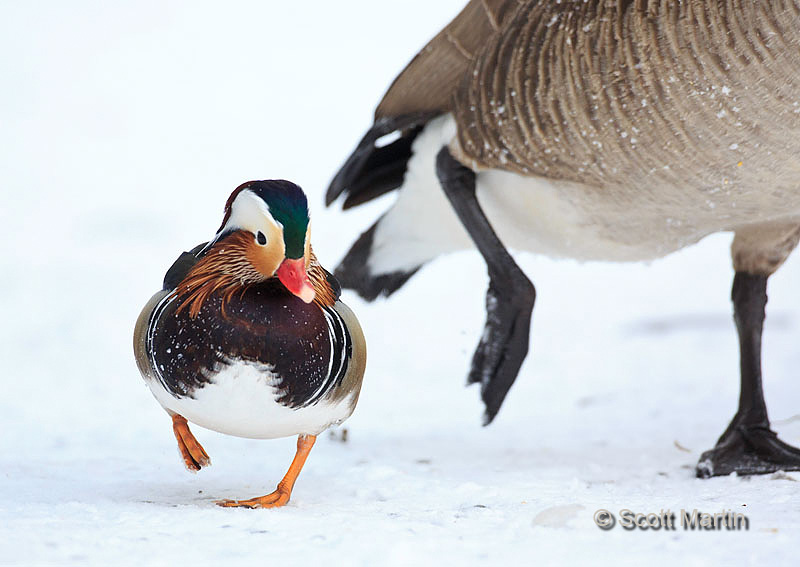
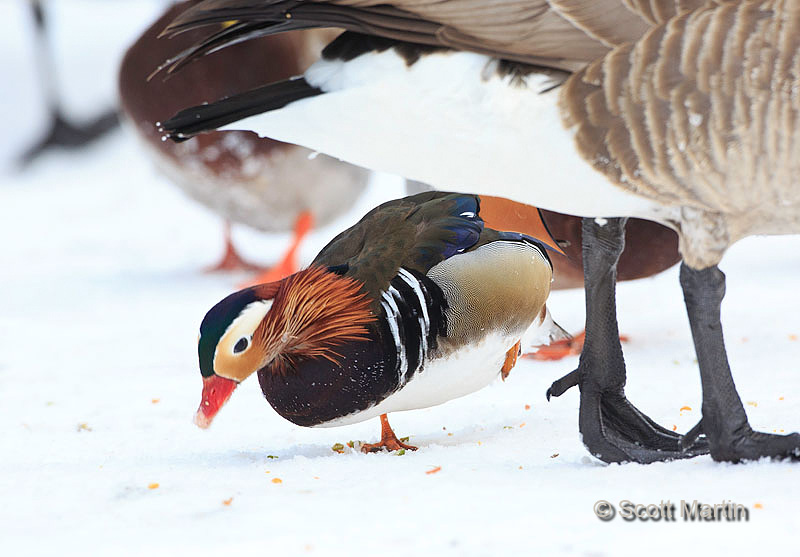
You did fantastic job on this gorgeous little creature, Scott.
As for the open water getting larger…..it didn’t. I was there this morning and it’s still as tight in there as last week. The Mandarin is doing just fine, though.
Thanks Joe and I’m glad you found my blog! With -25°C temperatures tonight that pond may shrink even further so I hope all of its inhabitants are OK.
These are some beautiful pictures of the Mandarin Duck
Thanks Joel for your comment and taking time to check out the website. Its much appreciated.
The Mandarin Duck is certainly a beautiful bird even though it is a bit geographically misplaced and it’s relationship to our Wood Duck makes perfect sense. Hopefully you and others will be able take pictures of it well into the spring and that small pool of water will sustain all who need it.
Thanks Arni and the warmer temperatures over the last 24 hours should have opened the pond up a bit.
Love these pictures Scott. I’ve never seen one before. Thank you!!
Thanks Cindy.
What a beautiful creature! Stunning photos Scott.
88
Thanks Lou and your gravatar looks great!! 88